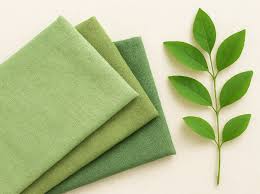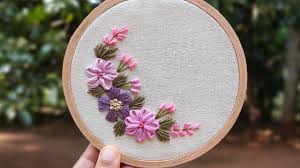Greener Fabrics: Redefining the Future of Sustainable Textiles

Introduction
The fashion and textile industry is one of the largest contributors to global pollution, consuming massive amounts of water, energy, and chemicals each year. As awareness of climate change and sustainability continues to rise, both brands and consumers are seeking alternatives that reduce environmental harm. This is where Greener Fabrics come into focus.
Greener fabrics represent not only an eco-friendly approach to manufacturing textiles but also a cultural shift towards more conscious consumption. They are created using recycled, organic, or innovative bio-based materials that have a reduced impact on the planet compared to traditional textiles such as conventional cotton or petroleum-based polyester.
In this article, we will explore the meaning of greener fabrics, the types available today, their benefits and challenges, and how they are shaping the future of fashion and textiles.
What Are Greener Fabrics?
Greener fabrics are textiles developed with the aim of minimising negative environmental impact across their entire lifecycle. This includes:
Material sourcing – using organic, recycled, or renewable raw materials.
Production methods – employing low-impact dyeing and finishing techniques.
Usage – creating fabrics that are durable and long-lasting.
End-of-life solutions – designing fabrics that can be recycled, composted, or biodegraded.
The goal is to create a circular economy in fashion, where waste is reduced, resources are preserved, and textiles remain in use for as long as possible.
Why Greener Fabrics Matter
The environmental footprint of the textile industry is staggering. Traditional fabric production contributes to:
Water waste – conventional cotton alone consumes thousands of litres of water per kilogram.
Chemical pollution – dyeing and finishing processes often release harmful substances into rivers and soils.
Carbon emissions – synthetic fibres such as polyester are derived from fossil fuels, contributing to greenhouse gases.
Waste accumulation – millions of tonnes of textiles end up in landfills each year, with synthetic fibres taking centuries to degrade.
Greener fabrics address these issues by focusing on cleaner inputs, reduced water and energy use, and more sustainable outputs.
Types of Greener Fabrics
Recycled Fabrics
Recycling plays a major role in greener fabric innovation. Materials such as PET plastic bottles are transformed into recycled polyester (RPET). This not only reduces plastic waste but also lowers dependence on virgin petroleum.
Pros:
Reduces landfill and ocean waste.
Lowers carbon footprint compared to virgin polyester.
Cons:
Still sheds microplastics during washing.
Quality may degrade after multiple recycling cycles.
Organic Cotton
Organic cotton is grown without synthetic pesticides or fertilisers. It supports healthier soil, biodiversity, and reduces chemical contamination in water supplies.
Pros:
Gentle on the skin and biodegradable.
Supports more sustainable farming practices.
Cons:
Requires large amounts of water in some regions.
Usually more expensive than conventional cotton.
Hemp and Linen
Hemp and flax (linen) are among the oldest fibres known to humanity, and they are inherently sustainable. Hemp, for instance, requires little water and no pesticides, and it grows rapidly in a variety of climates.
Pros:
Strong and durable.
Low environmental impact during cultivation.
Cons:
Coarser texture unless blended with softer fibres.
Production infrastructure is less developed than cotton.
Lyocell and Tencel
Lyocell, marketed widely under the brand Tencel, is made from sustainably sourced wood pulp such as eucalyptus. It is manufactured in a closed-loop system where solvents are reused, reducing chemical waste.
Pros:
Soft, breathable, and biodegradable.
Requires less water and chemicals compared to viscose.
Cons:
Dependent on sustainable forestry practices.
Higher production costs.
Innovative Alternatives
The future of greener fabrics also includes groundbreaking materials made from unusual sources such as:
Piñatex – made from pineapple leaf fibres.
Mycelium leather – grown from mushroom roots.
Algae-based fibres – biodegradable and renewable.
Banana fibre – durable and naturally eco-friendly.
While these materials are not yet mainstream, they highlight the direction in which fabric innovation is heading.
Benefits of Greener Fabrics
Environmental Benefits
Reduced waste by reusing plastic bottles, old textiles, or agricultural by-products.
Lower pollution due to organic farming and non-toxic dyeing processes.
Less energy and water use, particularly in hemp, linen, and lyocell production.
Social Benefits
Promotes safer working conditions for farmers and workers exposed to fewer chemicals.
Supports communities with fair-trade practices and regenerative agriculture.
Consumer Benefits
Durable and often of higher quality, leading to longer garment life.
Growing consumer preference for eco-conscious products.
Comfort and breathability, especially with natural fibres.
Challenges of Greener Fabrics
Despite their advantages, greener fabrics face several barriers:
Cost and Accessibility
Sustainable fabrics are often more expensive to produce, making them less accessible to mass markets. Brands must balance affordability with responsibility.
Greenwashing
Some companies label fabrics as “green” without truly sustainable practices, misleading consumers. Certifications and transparency are crucial to prevent this.
Recycling Limitations
Blended fabrics (e.g., cotton-polyester mixes) are difficult to recycle, limiting the effectiveness of circular economy efforts.
Scaling Issues
Innovative fabrics like mycelium leather are promising but not yet scalable to meet global demand.
Greener Fabrics vs Conventional Fabrics
Key Differences
| Feature | Greener Fabrics | Conventional Fabrics |
|---|---|---|
| Raw Materials | Organic, recycled, renewable | Petroleum-based or chemically treated cotton |
| Water Usage | Often significantly lower | Extremely high in cotton and dyeing processes |
| Chemical Impact | Low-impact or closed-loop systems | Heavy use of pesticides, dyes, and solvents |
| Waste | Designed for recyclability and biodegradability | High landfill contribution |
| Cost | Higher due to innovation and small-scale production | Lower but unsustainable |
The Future of Greener Fabrics
The textile sector is undergoing a transformation driven by demand for greener alternatives. Industry analysts project that the sustainable fabrics market will grow significantly over the coming decade as technology advances and production becomes more efficient.
Innovations such as 3D-printed textiles, bio-engineered fibres, and digital dyeing methods promise to further reduce waste and emissions. Consumer awareness is also growing, with more people demanding traceability, eco-certifications, and brands that practise real sustainability.
How Consumers Can Support Greener Fabrics
Choose certified fabrics such as GOTS-certified organic cotton or Fair Trade hemp.
Buy less but better, focusing on quality garments that last longer.
Support brands that are transparent about their supply chains.
Recycle or donate clothing rather than discarding it.
Conclusion
Greener fabrics are more than just a trend; they represent a long-term shift in how we produce, use, and value textiles. From recycled polyester to organic cotton, hemp, and innovative alternatives like Piñatex, these fabrics hold the potential to reduce environmental harm while promoting social responsibility.
The transition is not without its challenges, but with growing consumer awareness, technological innovation, and responsible manufacturing, greener fabrics are paving the way towards a cleaner, more sustainable future for fashion and textiles.



